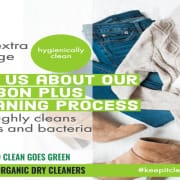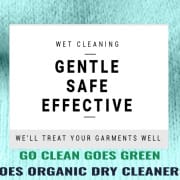
Wet cleaning is the process of cleaning garments and fabrics using water-based solvents as opposed to the toxic solvents used in conventional dry cleaning. This process involves the use of special machines and detergents designed to clean delicate or sensitive fabrics such as silk, wool, and cashmere without causing shrinkage, discoloration, or damage.
Pretreatment: The first step in wet cleaning is to pretreat the stain or contaminated area with a special solution designed to loosen and remove dirt, oil, and other contaminants.
Laundry: The clothes are then placed in a special machine that uses water and mild detergent to clean the fabric. Temperature, agitation, and rinsing are carefully controlled to ensure that garments are thoroughly washed without damage.
Rinsing: After washing clothes, rinse thoroughly to remove any remaining soap and dirt.
Drying: The clothes are then dried using a special machine that regulates the temperature and airflow so that the clothes are not overdried or exposed to high temperatures that can cause shrinkage or damage.
Finishing: The final step in wet cleaning is to press or steam the garment to restore its original look and texture.
Explain Wet Cleaning in more detail terms
Wet cleaning is a method of professional textile cleaning that uses water-based solutions and special machines instead of harsh chemical solvents, as in traditional dry cleaning. It is considered a more eco-friendly and gentler method of cleaning delicate and intricate fabrics like silk, satin, and wool, as well as delicate garments with embellishments and trimmings.
Wet cleaning involves a series of steps that include pre-treatment, washing, rinsing, and finishing. In the pre-treatment phase, stains and heavy soiling are treated with specialized solutions. Then, the garment is washed in specially designed machines that control water temperature, agitation, and chemical balance to ensure gentle and effective cleaning. Finally, the garment is rinsed and dried in specialized machines that help maintain its shape and texture.
Wet cleaning is a more effective alternative to traditional dry cleaning, as it can remove tough stains and heavy soil buildup, while also providing gentle care for delicate fabrics. It also eliminates the use of perchloroethylene (perc), a toxic and potentially harmful solvent used in dry cleaning, making it a safer and more environmentally responsible option.






































